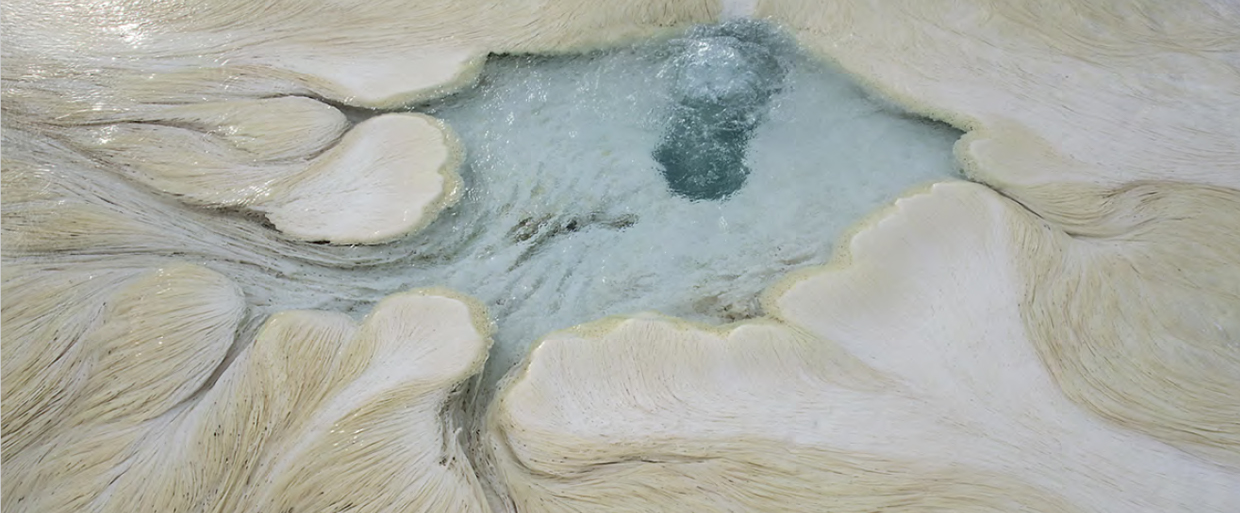-
The Art of Yellowstone Science
September 23, 2016 / Posted by: Miki Huynh
Image from The Art of Yellowstone Science. Credit: Tom Murphy
Image from The Art of Yellowstone Science. Credit: Tom Murphy
Image from The Art of Yellowstone Science. Credit: Tom MurphyThe Art of Yellowstone Science – Mammoth Hot Springs as a Window on the Universe explores the geobiological and astrobiological significance of Mammoth in Yellowstone National Park under both a scientific and artistic lens. Filled with vibrant photography, the ebook version is available to download through the University of Illinois at Urbana-Champaign.
From co-author, Bruce Fouke:
“I was first drawn to Mammoth Hot Springs in Yellowstone National Park as a natural laboratory for a NASA project to study how microbes form fossilized “biomarkers” in ancient travertine rock deposits. The water temperature, chemistry, and flow at Mammoth are similar to that found on the early Earth, and they still harbor heat-loving (thermophilic) microbial life that evolved billions of years ago. Requiring a combination of field and laboratory experimentation, this work has since expanded with practical applications to coral reef ecology, oil and gas exploration, the functioning of the Roman aqueducts, and human kidney stone disease. The broad goal is to understand the unifying physical, chemical and biological themes of a natural system like Mammoth on every level, from the single microbial cell to the entire ecosystem, and how these components and dimensions interact. After two decades of investigation, we are just now beginning to learn how Mammoth came into existence, how its vitality and scope can best be conserved, and even how its secrets contribute to the well being of humanity.Inspired by the natural photography of Tom Murphy, I have worked together with Tom for five years to create a unique book that melds art and science. The Art of Yellowstone Science demonstrates how these integrative evaluations at Mammoth are influencing global research on the environment, energy, medicine and space exploration.”
The Art of Yellowstone Science is also available in hardcopy. For more information, contact Bruce Fouke at fouke@illinois.edu.
- The NASA Astrobiology Institute Concludes Its 20-year Tenure
- Global Geomorphologic Map of Titan
- Molecular Cousins Discovered on Titan
- Interdisciplinary Consortia for Astrobiology Research (ICAR)
- The NASA Astrobiology Science Forum Talks Now on YouTube
- The NASA Astrobiology Science Forum: The Origin, Evolution, Distribution and Future of Astrobiology
- Alternative Earths
- Drilling for Rock-Powered Life
- Imagining a Living Universe
- Workshops Without Walls: Astrovirology